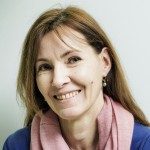Link to Pubmed [PMID] – 11130866
Res. Microbiol. 2000 Nov;151(9):755-68
A number of methods have been proposed to assess the viability of cells without culture. Each method is based on criteria that reflect different levels of cellular integrity or functionality. As a consequence, the interpretation of viability is often ambiguous. The purposes of this work were to evaluate the capacity of current viability markers to distinguish between live and dead Escherichia coli K-12 cells. Methods that assess ‘viability’ by the demonstration of metabolic activities (esterase activity, active electron transport chain, transport of glucose), cellular integrity (membrane integrity, presence of nucleic acids) or the building up of cellular material (cell elongation) have been evaluated in live and UV- or heat-killed cells. With live cells, viability markers detected cells in counts similar to the colony count. However, these so-called viability markers could stain dead cells for some time after the lethal treatment. For the UV-killed cells, residual activities were detected even after 48 h of storage at 20 degrees C. However, for heat-treated cells, these activities disappeared within hours after heat treatment. Only a combination of fluorescence in situ hybridization with rRNA probes and cell elongation in response to nutrients (in the presence of an inhibitor of cell division) had the ability to differentiate live from dead cells. Problems in the definition of a viable but nonculturable state are in part due to the lack of a clear definition of bacterial death. We consider death as an irreversible state where no growth, cell elongation or protein synthesis may occur.

